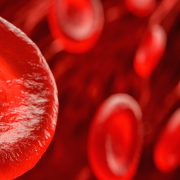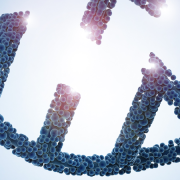First RNA-based therapy approved in US and Europe
Gene-silencing technique works without altering the person’s DNA, and prevents harmful proteins from being made in their cells
In August, a new therapy – the first of its kind – was approved in the US and Europe to treat a genetic disease. The therapy uses small pieces of RNA to effectively ‘silence’ a faulty gene, without changing the DNA of the patient.
Malformed proteins
Hereditary TTR-mediated amyloidosis (hATTR) is a genetic disease, caused by mutations in a single gene called TTR.
The TTR gene codes for a protein called transrethrytin, which is made primarily in the liver, and helps transport thyroid hormones and vitamin A around the body in the bloodstream. When certain mutations are present in the gene, the protein does not form properly. Instead of performing its normal function, the malformed ‘amyloid‘ proteins accumulate in the body’s tissues and organs, causing damage.
The amyloid proteins build up over time, so the disease usually affects adults, and symptoms get progressively worse. The disease most commonly affects heart tissue (amyloid cardiomyopathy), and/or the peripheral nerves (polyneuropathy). The eyes, kidneys and other organs can also be affected. Amyloid accumulation in tissues can lead to organ failure and is sometimes fatal.
A new type of therapy
The new drug patisiran (trade name Onpattro) has been licensed for polyneuropathy by the US Food and Drug Administration and the European Medicines Agency (EMA). Neither has licenced the drug for cardiomyopathy at present.
The UK’s Medicines and Healthcare products Regulatory Agency had previously granted patisiran a positive scientific approval though the Early Access to Medicines Scheme, which aims to give patients with life-threatening or seriously debilitating conditions access to medicines before they have been granted marketing authorisation. This allows patients to access therapies that are awaiting EMA approval.
The drug silences the faulty gene, so stopping the faulty protein from being made by the liver cells. It does this without altering the gene’s DNA. This reduces the amount of amyloid protein being deposited in the peripheral tissues, and may allow the cells to clear out some of what has already accumulated.
RNA interference
The therapy works by targeting the messenger RNAs (mRNAs) that transcribe the gene from the DNA in the cell nucleus, and then travel to the ribosome, a piece of cellular apparatus that reads off the genetic code and translates it into a sequence of amino acids, building the protein.
Small pieces of RNA bind and inactivate the mRNAs in a process called RNA interference (RNAi) so the message never reaches the ribosome and the protein is never made.
This type of therapy potentially has many applications. Nature reports that researchers are testing RNAi therapies to target proteins in the kidneys, eye, brain and spine, while another is working on an inhalable RNAi treatment for cystic fibrosis.
The science behind it, however, has a 20-year history. The lag in licensing of an RNAi treatment has been, at least in part, because of the difficulty in designing an effective delivery system to get the RNA pieces into the target cells. Lipid nanoparticle delivery has proved successful with liver tissue, and it is likely that more therapies will be launched using this approach. For genes expressed in other tissues, there is still work to be done.
–









